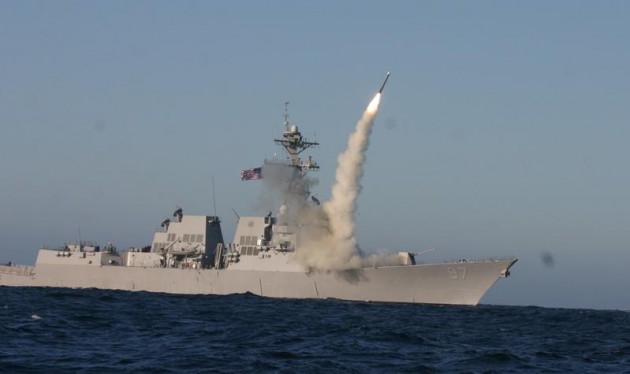Stick With The Tomahawk, Forget LRASM
Posted on
By Steve Russell

Here at BreakingDefense, we get a lot of op-ed submissions arguing for more spending on new weapons. Today, we present an argument on why new technology can sometimes be a trap. The author, Steve Russell, is a retired Army lieutenant colonel, and — though he’s too modest to mention this — a recipient of the Bronze Star for Valor for his actions in Iraq.
Using national resources for national defense is always difficult. Programs, policies and politics play pivotal and competing roles. The challenge for lawmakers, security advisors and department secretaries is to get it right.
Even during times of intense budgetary pressure, America has an obligation to invest in next-generation weaponry. But newer isn’t necessarily better.
In America’s culture of optimism and innovation, there is always the desire for the better mouse trap. Sometimes, traps are needed to catch rats and not mice, so the mouse traps must be replaced. Sometimes, the existing traps can be modified to more than do the job against the actual threat they face. But we must be intellectually honest and ask, “Can what we have already get it done?”
Such is the case with the Tomahawk missile. Designed in the 1970s and improved since, Tomahawks provide vital American strategic projection. Over 2,000 missiles have been launched in combat from 1991 to present. America has defeated threats in Desert Storm, the Balkans, Iraq and Afghanistan, the Sudan, at clandestine terrorist locations, and most recently in Libya. Over that time, they have proven uniquely reliable and versatile.
With current Tomahawks, known as “Block IV,” missions can be planned in an hour. Once the missile is launched, controllers can alter its trajectory, change its target, or even direct the missile to loiter in the air for hours at a time. Tomahawks can strike across land, water and any environment over 900 miles from their launch points –that’s more than the distance from Washington, DC to Atlanta. The US can conduct strikes in heavily guarded airspace without directly endangering American military personnel. They are also used by our closest allies.
Yet despite the Tomahawk’s success, some defense officials are considering phasing out the program in favor of a new, experimental weapon known as the Long-Range Anti-Ship Missile (LRASM). Pivoting to LRASM could be a costly and strategic mistake. It could unnecessarily increase military expenses during a time of severe budget cuts.
LRASM is years away from proving itself, and LRASM-like missile programs have a pretty poor track record. LRASM closely resembles the Joint Air-to-Surface Standoff Missile (JASSM), a weapon with a long history of failed test launches. Among other things, JASSM is known for its faulty mission planning system, unreliable GPS capabilities, and a regular inability to hit targets. In many crucial ways, LRASM appears to be JASSM by another costly and experimental name.
Even if LRASM isn’t racked with technical problems, it could be over a decade before the program becomes operational. More than one third of America’s Tomahawks are depleted and even those will need an upgrade long before then. Improving what works makes better sense.
As a combat soldier, I would have never wished away some great capability in the field. But also having received expensive and useless goods rushed to a war zone, it makes more sense to keep those that work.
For example, the .50 caliber Machine Gun was designed in 1919. That’s right, just after the First World War. It has been successfully upgraded and is still used today by all the armed services. It is efficient, deadly and respected by all of us who have used it in battle to defeat America’s enemies. Why? It simply works. America has protected thousands of lives and saved billions of dollars by resisting the calls for a potentially better mouse trap.
The most recent LRASM safety test contract could have purchased more than 70 Tomahawk missiles, replacing about half of those used in Libya. As it stands, no replenishment is scheduled.
Further, the Pentagon has endured $46 billion in spending reductions since March. Over 600,000 civilian workers were forced into furloughs to bring down costs. More cuts are on the way. This is precisely the wrong time to abandon what works in favor of what might or might not.
A combat-proven system is on hand. The technologies needed to improve the Tomahawk already exist and could be implemented at a frugal and predictable cost to taxpayers. We do not need the maybe-better mouse trap.
Retired Army Lt. Col. Steve Russell was involved in the capture of Saddam Hussein and is the author of We Got Him! A Memoir of the Hunt and Capture of Saddam Hussein. He is an infantry veteran of Kosovo, Kuwait, Afghanistan and Iraq, a military analyst for Concerned Veterans for America and served as chairman of the Veterans Affairs Committee in the Oklahoma Senate. He is not working for or affiliated with any of the companies mentioned in this article.
Subscribe to our newsletter
Promotions, new products and sales. Directly to your inbox.
